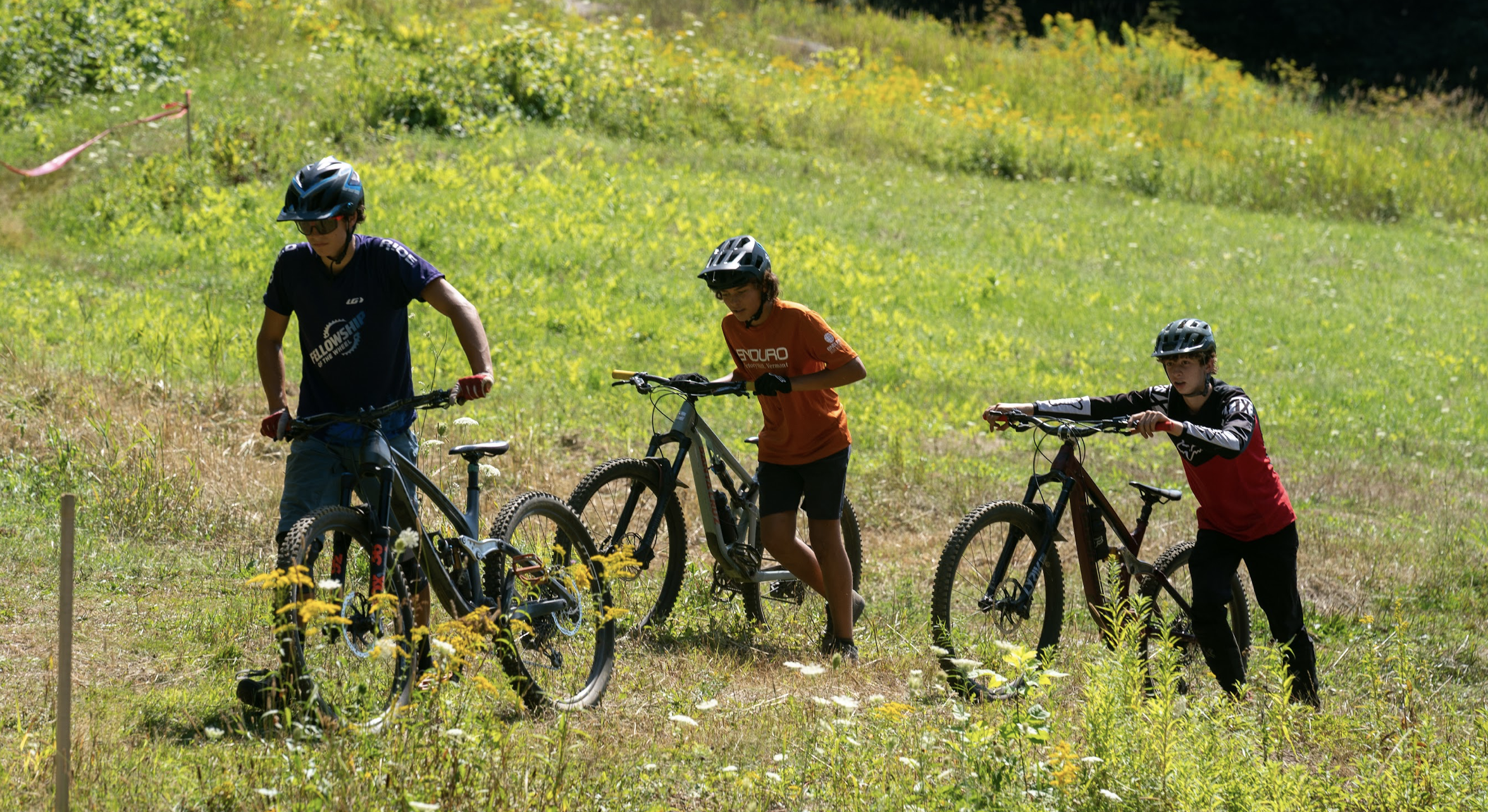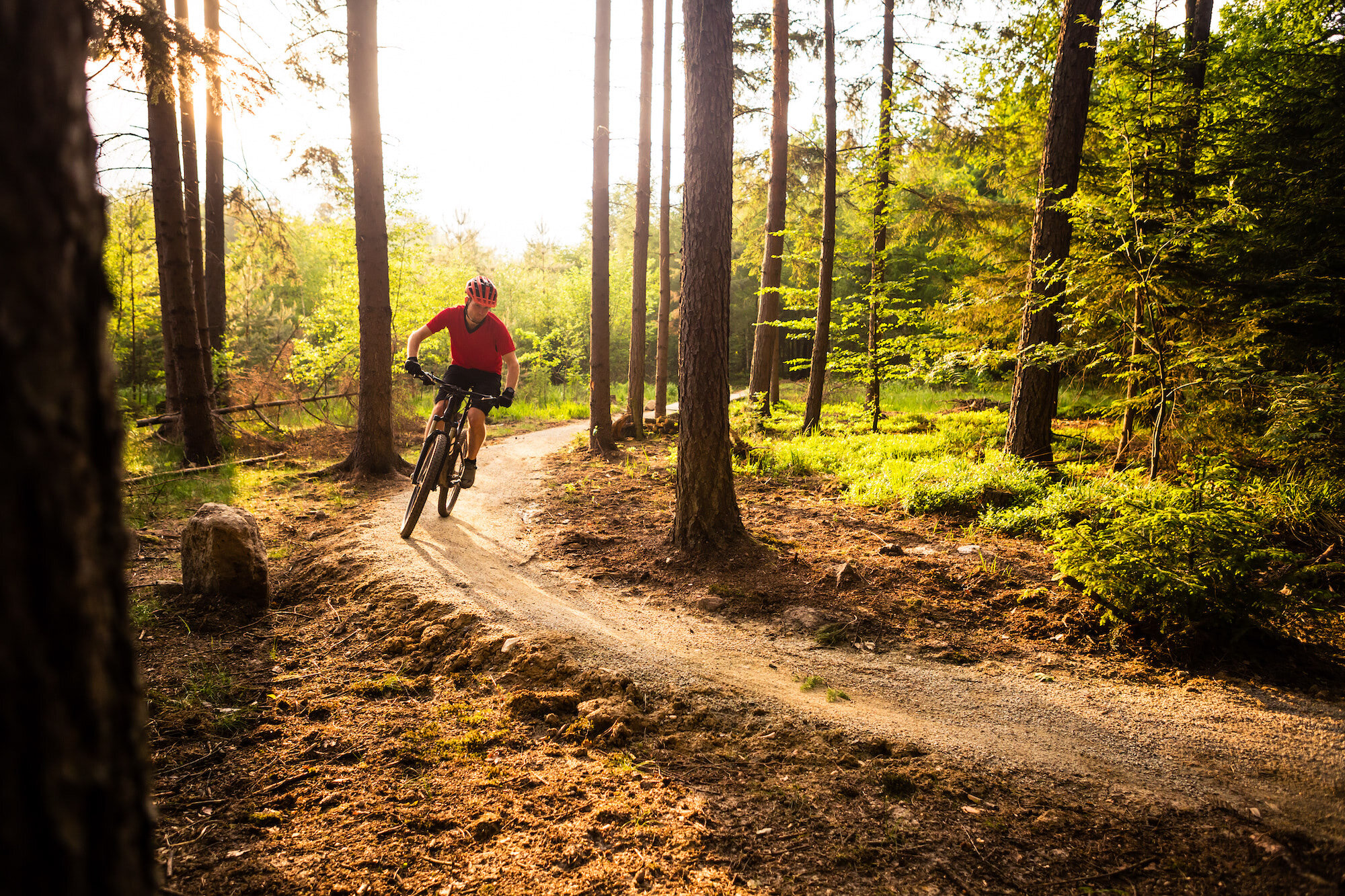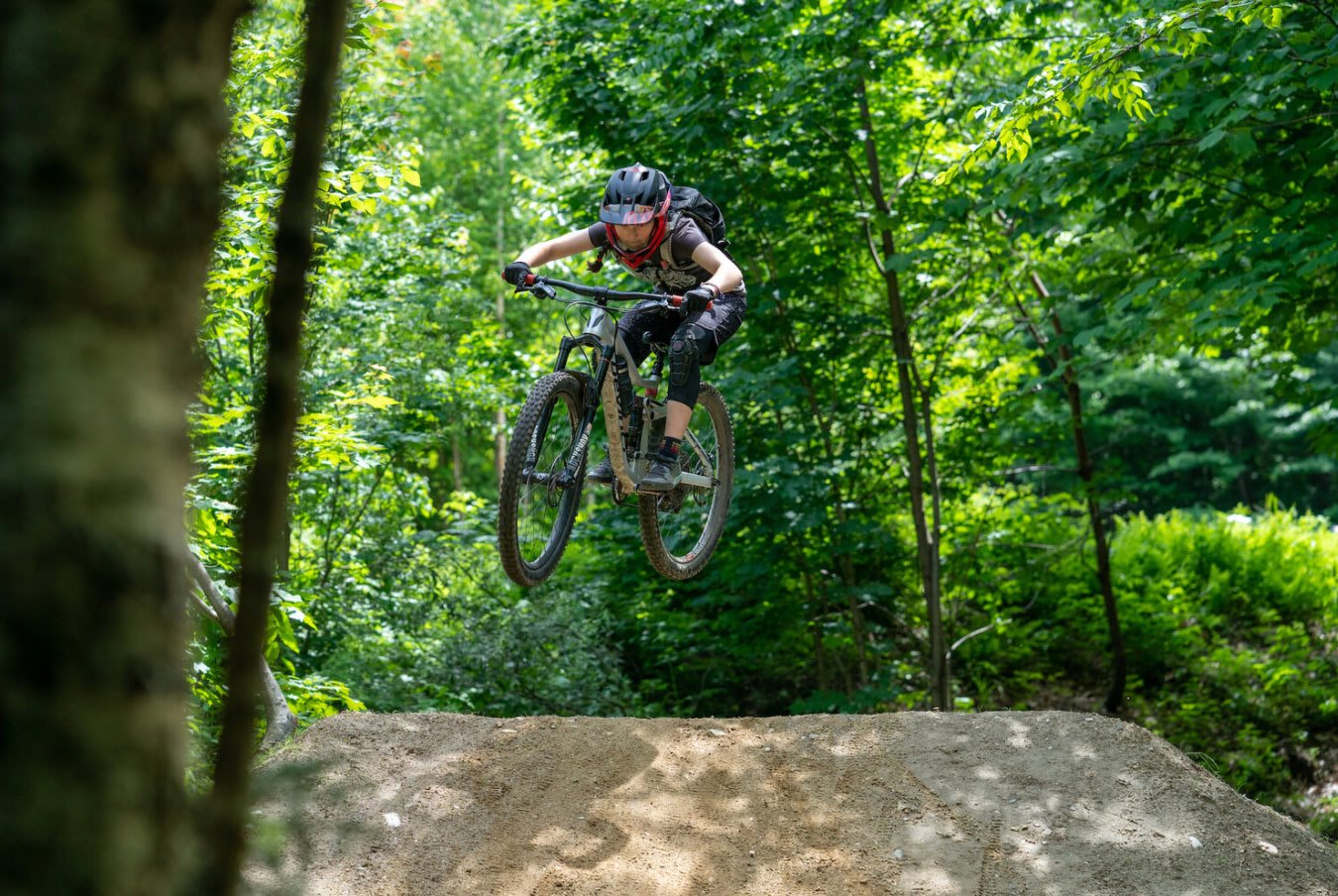
Hucksters
Stowe Mountain Bike Academy Programs - Hucksters
Riders in the Hucksters category should be comfortable riding any type of mountain bike trail from root-gnarled singletrack to fast flow trails and be able to complete a 10 mile mountain bike ride within two hours. Through practicing skills before hitting the trails and working with SMBA’s certified coaches, riders will progress to being able to ride challenging trails with newfound confidence and consistency.
Huckster Skill Level & Program Goals →
What to Bring to Practice →
Bike Setup →
Preseason Bike Check →

Hucksters
Ages 9-14
RIDER’S CURRENT SKILL ACHIEVEMENTS:
Riders in the “Huckster” category should be comfortable riding most of the trails in Cady Hill from getting both wheels off the ground on Florence jumps, to clearing rooty sections of trail on Bridgey or Schween Haus.
Riders should also have a strong grasp on skills such as: track stand, roll downs, pumping, berm and flat cornering, and rear wheel lifts.
Rider can participate in physical activity for at least three hours (with few breaks) and is excited to progress their riding
Rider is ready to ride more difficult terrain
Rider has a strong grasp of Shredder Level Learning Goals
PROGRAM GOALS:
Review and master Shredders learning goals
Through games and on trail application, riders will learn and improve skills such as; track stand, bunnyhop, high speed cornering, drops, and jumping
Riders will learn various ways of ‘seeing’ the traill and interpreting it through their riding ability and style
Learn to lift your front wheel off the ground to clear features by finding grip, balance, and appropriate speed
Master techniques for riding tight switchbacks, berms with speed, and riding flat corners
Learn line selection on larger features like steep and loomy trail sections or rock faces
Take off and landing larger drops
Trail-side repairs
Reading the trail and trail/feature risk analysis
The Rider’s Current Skill Achievements are intended to gauge where your rider’s experience and skills are currently at the start of the program.
If you are unsure which program is best for your rider, please request a 1-hour skills assessment or phone call with a coach. The cost of an in-person skill assessment will be applied to your rider’s tuition upon enrollment at the current 1-hour private lesson rate.
During the season a coach may suggest moving your rider to another group more aligned with your rider’s progression on the bike. The first week of each season allows coaches to meet your rider and if group changes are needed, we’ll contact parents/guardians first.
The goal of the SMBA progression program is to build your rider’s confidence, skills and instill a lifelong enjoyment for riding. Furthermore, SMBA programs work within a positive feedback loop to help coach riders to learn and apply new skills continually. The feedback loop encourages our riders to start with their strengths, links their feedback to the target skill, and gives the rider their next progressive riding goal. Using this method ensures personalized coaching for each rider within the small group environment.

WHAT TO BRING TO PRACTICE
Helmet - See Helmet Policy for fit information. We have discounted helmets for sale through our partnership with UVM Health if needed.
Close toed shoes
Snack and Water - A water backpack like a Camelbak is a great option. SMBA has snacks on hand should your rider forget.
Bike Gloves
Suggested: Spare tube - make sure it’s the same size as your bike
Suggested: Quick link for fixing a broken chain
Suggested: Multi-tool with chain breaker

BIKE Setup
Fork - When setting up your fork, use the manufacturer’s ‘rider weight’ settings as your starting point to begin adjusting your air pressures, rebound and compression settings (if necessary, depending on make/model).
Shock - When setting up your bike’s rear suspension, add air to the shock’s air can using a shock pump and, as a starting point, have the PSI match the rider’s body weight. Rebound and compression settings can be adjusted based on the PSI number (shock manufacturers often provide rebound setting guides on their websites), rider’s style of riding and terrain.
Tires - When airing up your tires, use your tire’s listed PSI recommendations as a starting point. Standard mountain bike tire PSI numbers (excluding plus size and fat tires) will range from the upper teens to upper 20’s. If riding tubeless tires, a slightly lower PSI can be used vs. a tubed tire. Lower pressures can allow for better grip in wet conditions while higher pressures can decrease rolling resistance. Remember, running PSI pressures too low can result in pinch-flats, rolling or burping a tire and high pressures can decrease traction in wet conditions and decrease your tire’s “suspension”, creating a bumpier ride.
Seat - When setting up seat height you want to ensure that when seated on your bike you have a 25-30 degree bend in the knee when your leg is fully extended on the pedal. If you feel like you are hyperextending your leg on each pedal stroke, drop the seat a bit further. The seat can also be adjusted forward and aft allowing you to slightly adjust the reach of your bike. If seated on your bike with your feet equally weighted on the pedals, try to align your knee (on your forward most foot) above the ball of the foot on the same leg.
Handlebars and Headset - Handlebars can be rotated, width adjusted or swapped out completely (for a different sweep profile) to suit a rider’s preference. Grips come in a variety of shapes, sizes and styles as well. Brakes and brake levers can be adjusted to accommodate different hand sizes and riding preferences. Additionally, the headset can be adjusted to fine tune the overall reach (stem) and handlebar height (headset spacers). If you find that your bike’s current setup isn’t the most comfortable, don’t be afraid to do some adjusting or bring it to a local shop to have it property fit.

PRE-SEASON BIKE CHECK
ABC QUICK BIKE CHECK - A GOOD PRE-SEASON CHECK, BUT ALSO SOMETHING WE TEACH RIDERS TO DO BEFORE EVERY RIDE.
Air - The tires should feel like a ripe orange. Too much air can be almost as bad as too little. Also, inspect the tires for any cuts, worn tread, or signs of excessive wear.
Brakes - The brakes should engage at approximately half the distance from a resting position to all the way against the bar. Make sure the cables and housing are not frayed and both levers squeeze and return smoothly.
Chain - A clean and lightly lubricated (bike specific chain lube is best) chain keeps those gears happy. Give it a good clean and run through the gears to make sure all the gears are shifting easily.
Quick Release - Check the quick release or wheel axles (where the center of the wheel attaches to the bike). They should be snug! You can also double check by trying to wiggle the wheels side to side with your hand and feeling if there is any play. If it is not easily snugged up, bring it to the local bike shop for a check.

